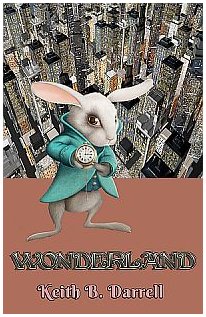According to Forbes (via Bloomberg), 8 out of
10 entrepreneurs who start businesses fail within the first 18 months. Put
another way, only 20% of new businesses are still around a year and a half
later. Increasingly in our post-Great Recession economy – a period defined by a
jobless recovery, in which investors are reaping huge gains on Wall Street,
while Main Street is littered with résumés – the formerly employed who now find
themselves unemployable are choosing self-employment over unemployment. It
certainly makes sense they would choose to label themselves as “entrepreneurs”
and emulate the Rich Uncle Pennybags (the iconic top hat and tails millionaire
from the Monopoly game) rather than admit to being unemployed and resemble a
character from Steinbeck’s The Grapes of Wrath.
Yet, if Forbes is to be believed, 80% of the newly
minted “entrepreneurs” née “unemployed” are destined for failure and
bankruptcy. While success in business may appear elusive, a simple axiom known
by schoolchildren for hundreds of years holds the secret to establishing an
enormously successful business: simply build a better mousetrap. The meaning of
this adage is clear: find a product everyone needs and improve upon the
competition’s design. Then, logically, consumers will abandon the obsolete
version and flock to the new and improved model.
Madison Avenue continually offers consumers “new and
improved” – cars, dishwashing detergent, beauty cream… every product is wrapped
in the “new and improved” cloak; never mind that the cloak came from the same
tailor who made The Emperor’s New Clothes. The products are not really new and
the much touted improvements come from the minds of marketing mavens, not
research and development engineers. Logically, the words “new” and “improved”
are mutually exclusive. If something is new, it has never existed before;
whereas, for something to be improved, it must have first existed. It can’t be
both. But that hasn’t stopped Madison Avenue from marketing “new and improved”
to American consumers for over half a century.
The secret of business success is not saying one has built a
better mousetrap, but actually doing so. This is where all those businesses are
failing. Let’s examine the basic mousetrap. As you may recall from your childhood
Tom and Jerry cartoon days, the traditional mousetrap consists of a
piece of cheese set on a trigger that snaps when the mouse tries to snatch the
cheese. Attempts to build a better mousetrap usually focus on the design of the
trap – we all recall the Rube Goldberg-esque Mousetrap game produced by Hasbro.
Likewise, many businesses and entrepreneurs go to extremes modifying design
while ignoring the bait.
The bait, of course, is the cheese. And therein lies the
problem. It turns out that mice do not like cheese. Really. That’s a fact, I’m
not making it up. Mice eat grains and fruit, both high in sugar, and (like most
of us) would probably choose chocolate over cheese. (The pungent scent of cheese might even lead the mice to eschew the
mousetrap.) So, to build a better mousetrap, one must not make the mistake of dwelling solely on the design. In business terms, this is best expressed in
another adage: “Think outside the box.”
Long-term
business success comes from true innovation (think Apple Computer), not from
changing the window dressing. Innovation can take the form of a brand-new
product or a significant change to existing one. But it must be real and
meaningful, not hyperbole. For corporations and wannabe entrepreneurs, that
means leaving the comfort zone of simply repackaging or applying a fresh coat
of paint to what’s come before, and instead thinking and looking at things in a
completely different way. One cannot move forward by continually looking in the
rear-view mirror.





No comments:
Post a Comment